
Updated: February 02, 2024
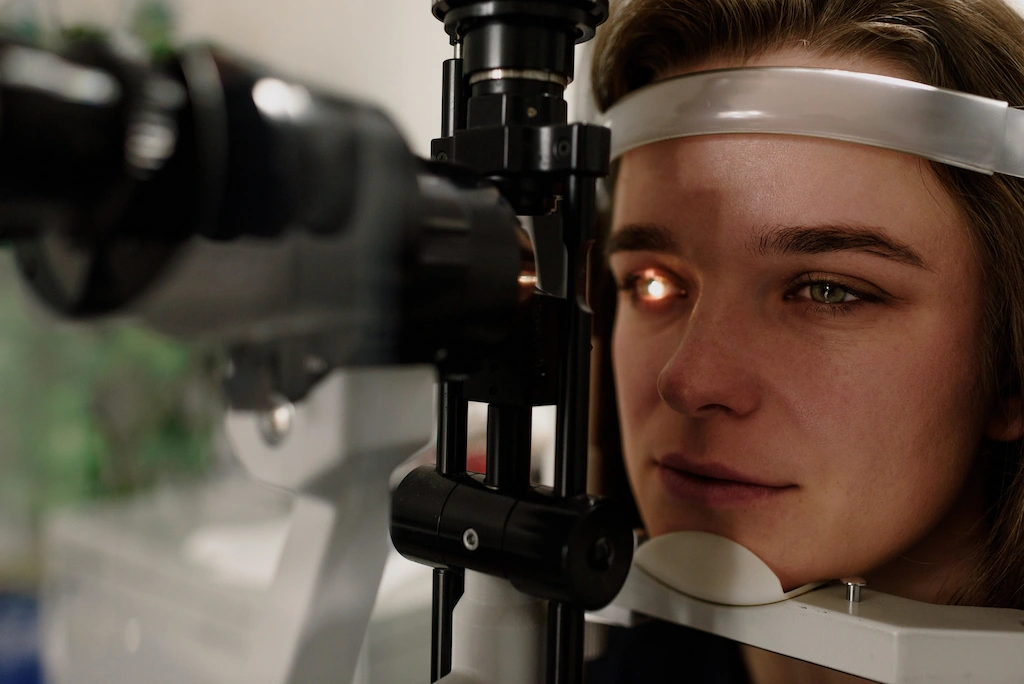
Do you have blurry vision that makes it difficult to see clearly? Are you tired of wearing glasses or contact lenses? If so, you may be considering laser eye surgery. But before you decide, it’s important to understand the benefits and possible risks of different laser eye surgery procedures.
One of the newer laser eye surgery procedures is SMILE, which stands for Small Incision Lenticule Extraction. But is SMILE eye surgery safe in Kansas City, MO? And, what is the success rate of SMILE surgery?
In this blog post, we’ll take a closer look and discuss the procedure’s safety. We’ll also compare SMILE to LASIK and other laser eye surgery procedures.
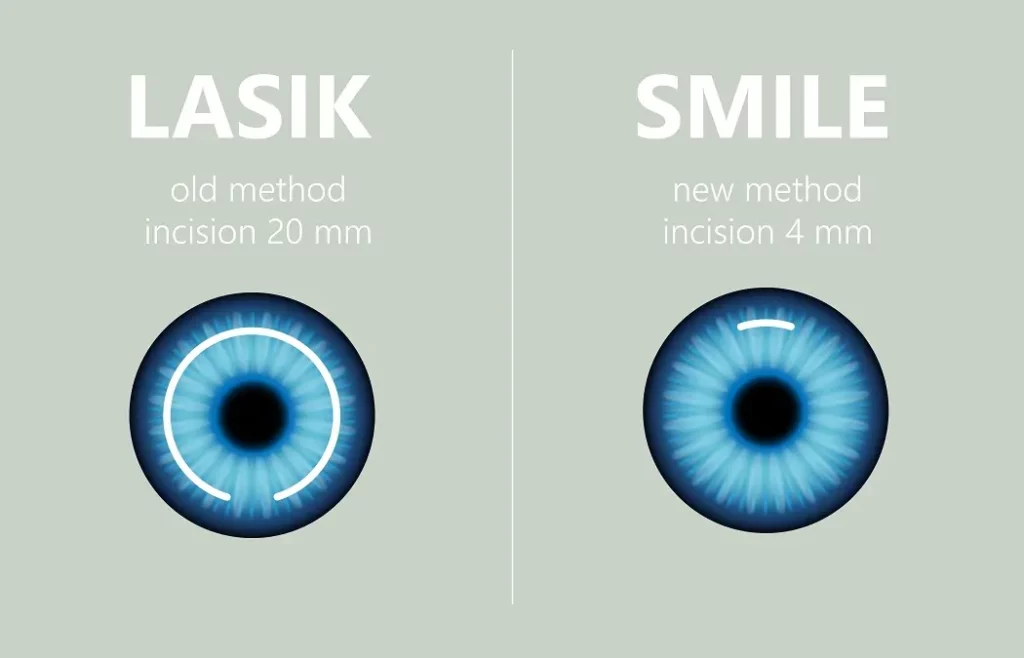
Small Incision Lenticule Extraction (SMILE) is a type of laser eye surgery that corrects vision problems such as nearsightedness with or without astigmatism. It is a newer procedure than LASIK eye surgery.
In SMILE surgery, a femtosecond laser creates a small lenticular, or disc, of corneal tissue, which is removed. The incision is self-healing, so there is no need for stitches.
SMILE surgery offers several advantages over LASIK or PRK surgery. It is less invasive, so it has a shorter recovery time and a lower risk of complications.
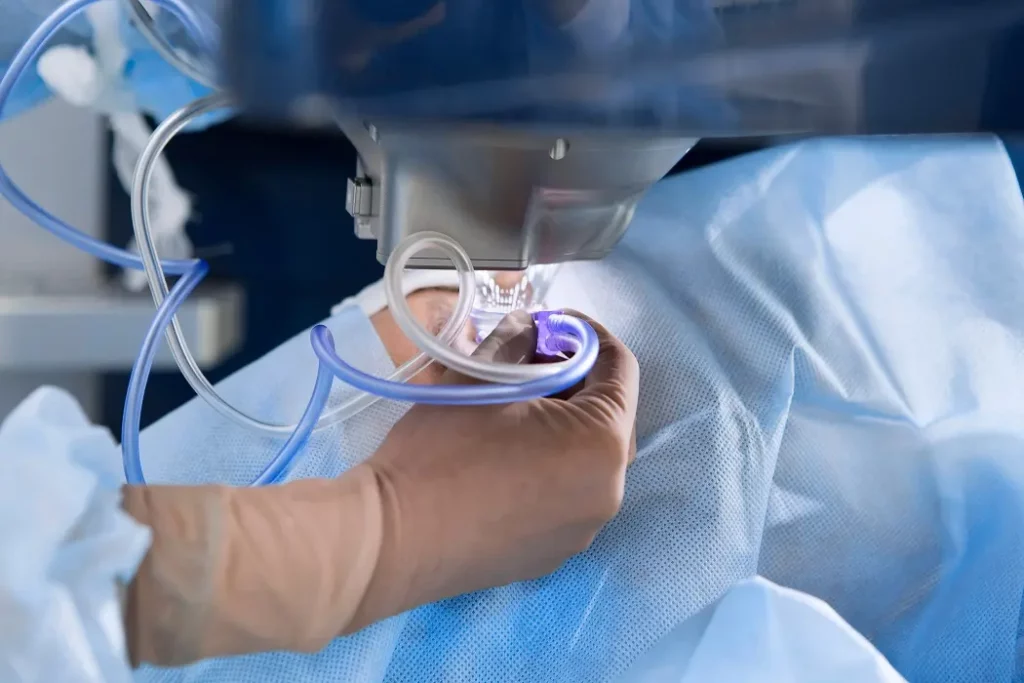
The laser vision correction procedure for SMILE surgery is as follows:
Femtosecond lasers are a safe and effective technology for laser eye surgery. They are precise, have a high peak power, a non-thermal effect, and are heat damage-free. This makes them ideal for creating precise incisions in the small cornea.
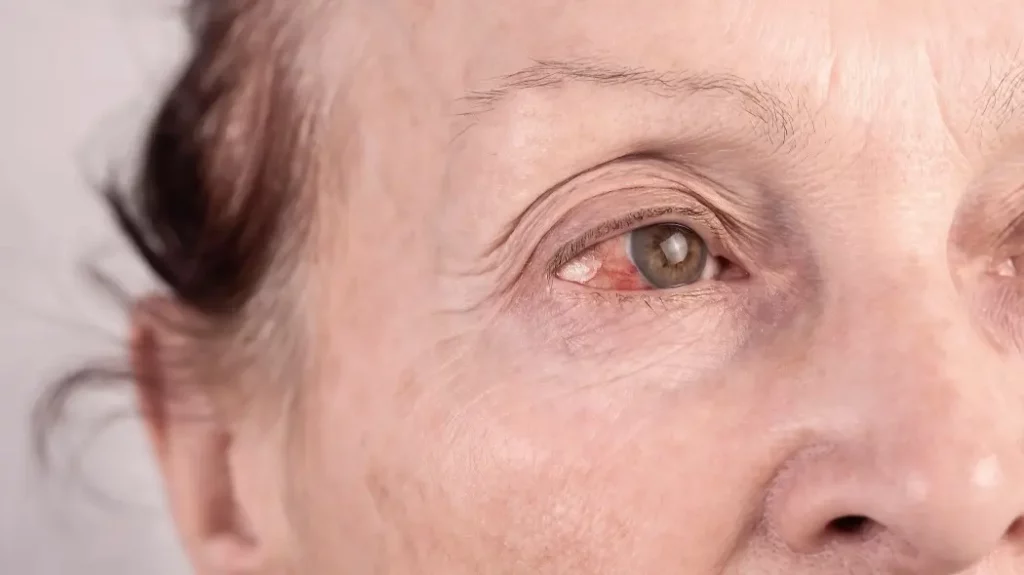
Like any medical procedure, there are some potential risks to SMILE eye surgery. However, a recent study found that 90.24% of patients who received the treatment achieved an Uncorrected Distance Visual Acuity (UDVA) of 20/20 or better after surgery.
Possible associated smile eye surgery risks include:
Naturally, surgeons do their best to reduce risk by selecting suitable patients, using the right equipment, following correct procedures, and providing adequate post-op care. With these precautions in place, the risks of SMILE surgery decrease significantly.
If you don’t qualify for SMILE surgery, there are other options. Remember, a reputable surgeon will only recommend SMILE if it’s suitable to your eye health needs.

Although SMILE is a minimally invasive procedure, you’ll want to take these precautions during the surgery:
After your SMILE vision-correction treatment:
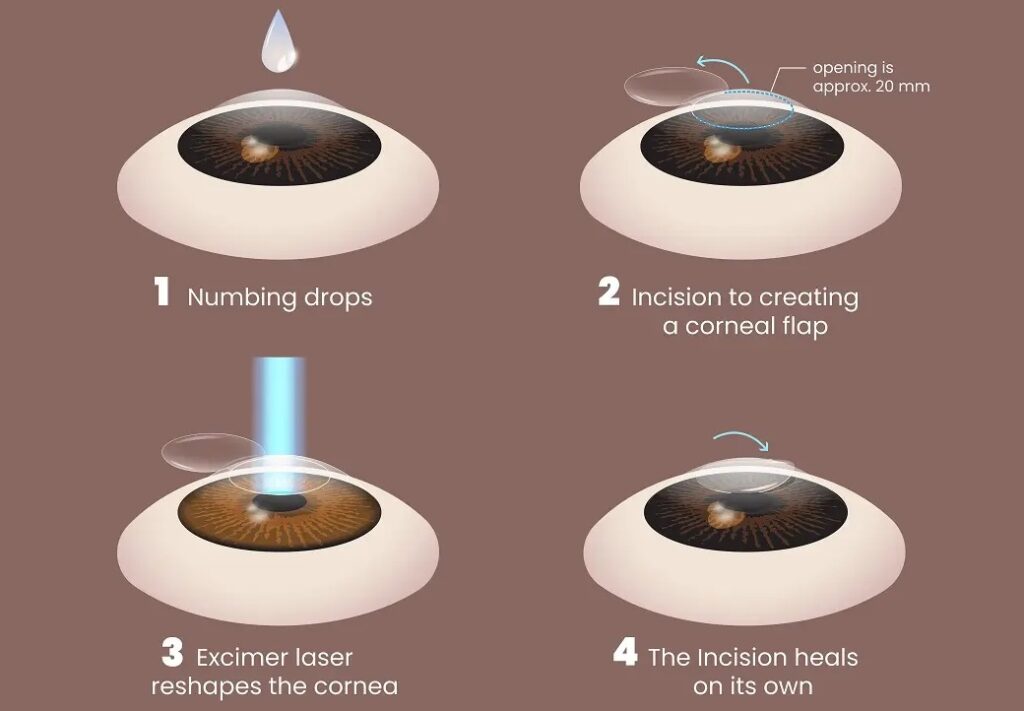
A 2017 study found that 77%-98% percent of SMILE patients had 20/20 vision three months after the procedure and that it is an “effective and safe refractive surgical option ” for mild to moderate myopia.
By avoiding the creation of a corneal flap, SMILE surgery minimizes the risk of complications such as flap detachment or flap-related issues. As a result, the smile laser eye surgery success rate is generally high.
It is crucial to find a leading surgeon who has performed a significant number of SMILE procedures and is up-to-date with the latest techniques.
Important questions you should ask during your consultation for SMILE eye surgery:
SMILE eye surgery has quickly become a popular option for people looking for a safe and effective way to correct vision problems. As of 2024, over 8 million SMILE procedures have been performed worldwide. If you are considering SMILE eye surgery, it is important to talk to a qualified surgeon about your needs and goals.
So, why not contact us for professional SMILE surgery advice? Discover Vision Centers is here to answer all your questions about the SMILE surgical procedure and determine whether it’s the right solution for correcting your vision.